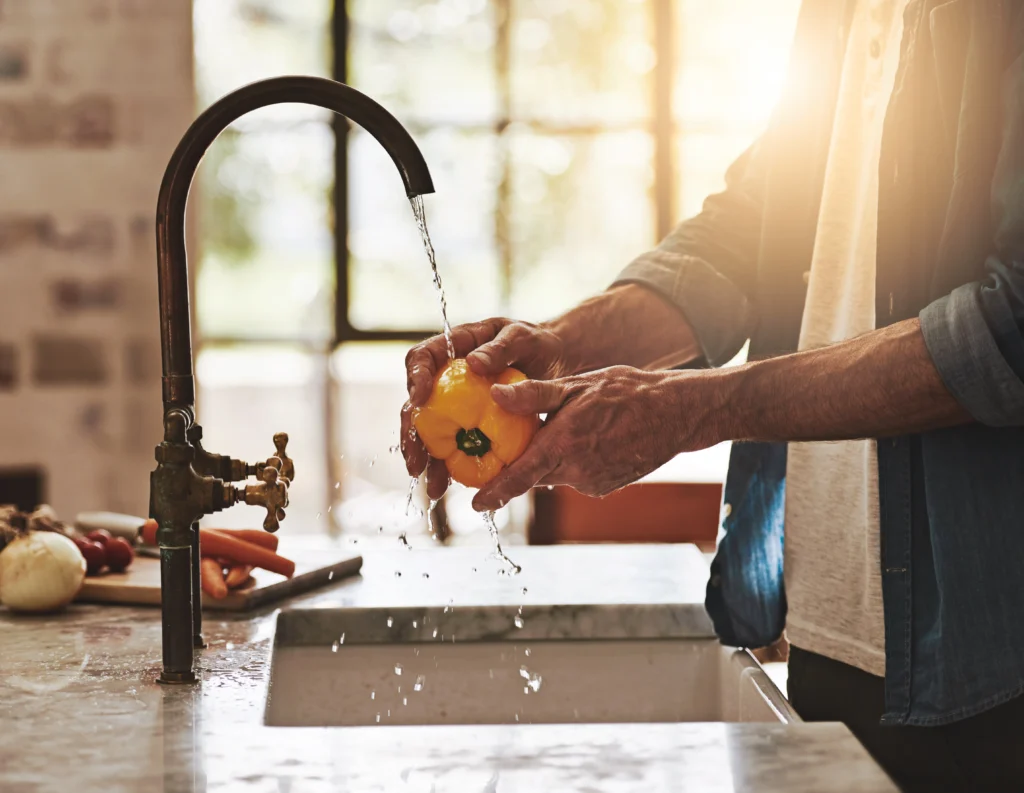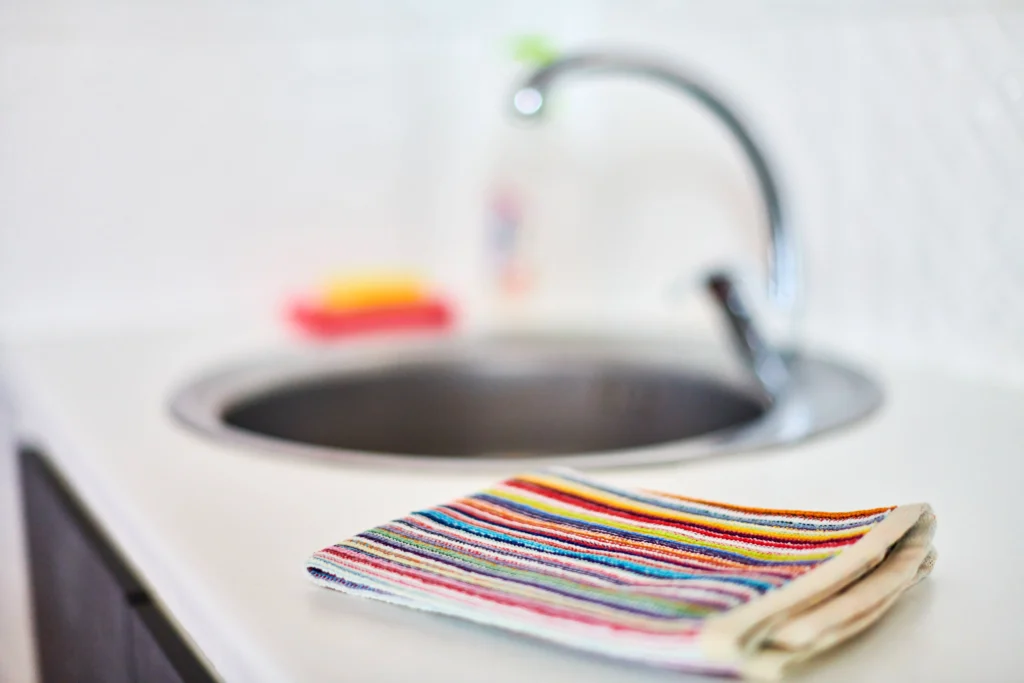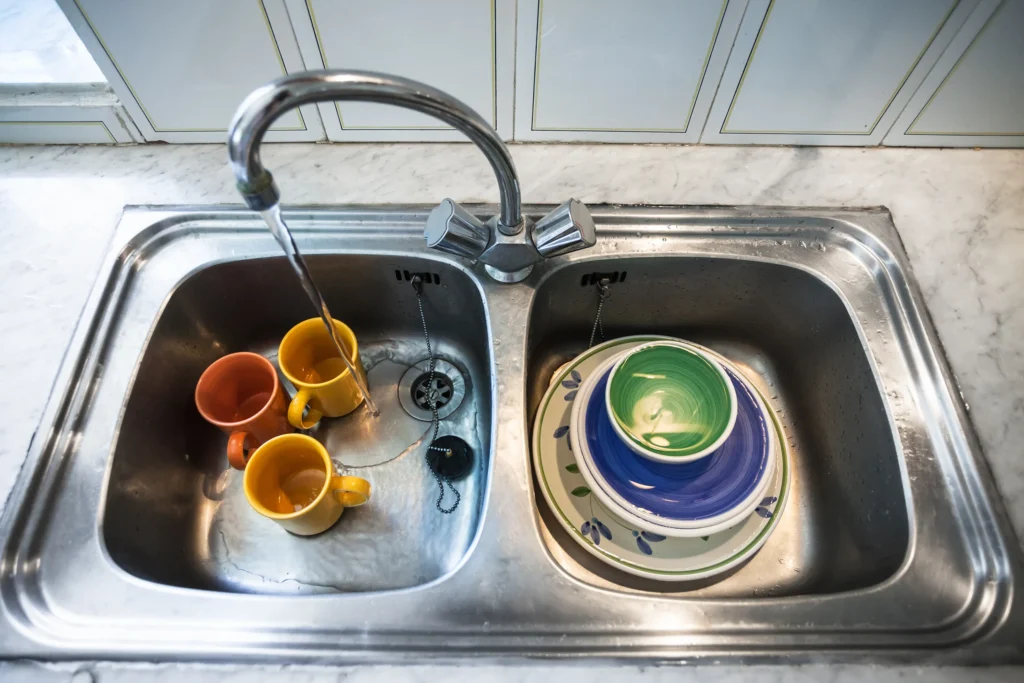The kitchen sink is one of the most frequently used fixtures in a home. From washing dishes to food preparation, it plays a crucial role in daily tasks. However, like any other household component, a kitchen sink can develop problems over time. Leaks, clogs, and slow drainage are among the most common issues that homeowners face. While some problems require professional intervention, many can be fixed with the right approach and tools. Let’s get into how to fix kitchen sink issues.
Understanding how to troubleshoot and fix common kitchen sink issues can save time and money. Whether the problem is a leaky faucet, a clogged drain, or a damaged seal, taking the appropriate steps ensures that the sink remains functional and efficient. This guide provides a detailed look at common kitchen sink problems and how to resolve them effectively.

Identifying Common Kitchen Sink Problems
Before attempting any repairs, identifying the exact issue is essential. Kitchen sink problems can range from minor nuisances to major plumbing concerns. Some of the most frequent issues include:
- Leaky Faucet: Water dripping from the faucet even when turned off often results from a worn-out washer, O-ring, or cartridge.
- Clogged Drain: Accumulated food particles, grease, and soap scum can cause slow drainage or complete blockages.
- Low Water Pressure: If water flow is weak, the aerator may be clogged, or there could be an issue with the pipes.
- Leaky Pipes: Water pooling under the sink usually indicates a loose connection or a damaged P-trap.
- Loose Sink Mounting: Over time, a sink can become loose from the countertop, causing instability and potential leaks.
By diagnosing the problem correctly, homeowners can determine the best course of action for fixing the sink efficiently.

Fixing a Leaky Kitchen Faucet
A leaking faucet is one of the most common kitchen sink issues. While it may seem like a minor inconvenience, even a slow drip can waste gallons of water over time. The most likely cause of a leaky faucet is a worn-out washer or O-ring, which creates a poor seal inside the faucet mechanism.
To fix a leaky faucet, turning off the water supply is the first step. The handle is then removed to access the internal components. Depending on the type of faucet—compression, ball, cartridge, or ceramic disk—the faulty washer or cartridge is replaced. Once the new part is installed, reassembling the faucet and turning the water supply back on helps determine if the leak has been resolved.

Clearing a Clogged Kitchen Sink Drain
A clogged kitchen sink can be frustrating, as it slows down daily activities and may cause standing water in the sink. Grease, food particles, and soap buildup are common causes of drain clogs. Before attempting to clear the drain, assessing the severity of the blockage is important.
For minor clogs, boiling water can be poured down the drain to dissolve grease and loosen debris. If the clog persists, a combination of baking soda and vinegar can help break down organic material. After letting the solution sit for a few minutes, flushing the drain with hot water helps remove any remaining residue.
For more stubborn clogs, using a plunger creates suction that can dislodge the obstruction. If these methods fail, manually removing and cleaning the P-trap may be necessary. The P-trap is the curved section of the pipe beneath the sink that often collects debris. By placing a bucket under the trap, loosening the connections, and clearing any buildup, water can flow freely again.

Restoring Water Pressure in a Kitchen Sink Faucet
Low water pressure in a kitchen sink can make daily tasks difficult. If the issue is isolated to the faucet, the aerator may be clogged with mineral deposits. Unscrewing the aerator and soaking it in vinegar for an hour can dissolve any buildup, restoring normal water flow.
If cleaning the aerator does not solve the problem, the issue may be deeper within the plumbing system. A partially closed shut-off valve, sediment buildup in the pipes, or a leak in the water supply line could be restricting water flow. Checking these components helps determine whether a professional plumber is needed for further repairs.

Fixing a Leak Under the Kitchen Sink
A leak beneath the kitchen sink is often due to loose connections, worn-out seals, or a damaged P-trap. Identifying the source of the leak involves drying the area and turning on the water to see where it drips.
If the leak is coming from the P-trap, tightening the slip nuts or replacing the washers can resolve the issue. If the leak persists, the P-trap may need to be replaced entirely. In cases where the leak originates from the sink drain or supply lines, applying plumber’s tape to the connections creates a better seal and prevents further dripping.
Regularly checking under the sink for signs of moisture or water damage can help catch leaks early before they cause significant problems.

Securing a Loose Kitchen Sink
Over time, a kitchen sink can become loose from the countertop, causing gaps where water can seep through. This issue is more common in undermount sinks, which rely on adhesive and mounting clips to stay in place.
Reattaching a loose sink requires applying a fresh bead of silicone sealant around the edges and tightening the mounting clips underneath. Allowing the sealant to cure properly ensures a watertight connection between the sink and the countertop.
For drop-in sinks, tightening the metal clips that secure the sink to the counter often solves the problem. Ensuring that the sink sits flush with the countertop prevents water from seeping underneath and causing mold or damage.
Preventing Future Kitchen Sink Issues
Regular maintenance is key to preventing many common kitchen sink problems. Simple habits, such as avoiding pouring grease down the drain and using a strainer to catch food particles, help reduce the risk of clogs. Running hot water after washing dishes also helps flush out any residue that could accumulate in the pipes.
Checking for leaks periodically ensures that small problems do not turn into costly repairs. Keeping an eye on faucet performance, water pressure, and the condition of pipes beneath the sink helps homeowners address potential issues before they worsen.
Using mild cleaning solutions to prevent mineral buildup in faucets and drains also extends the lifespan of the sink and plumbing components. A well-maintained sink not only functions efficiently but also contributes to a cleaner and more hygienic kitchen.

Conclusion
Fixing common kitchen sink problems does not always require professional plumbing services. By identifying the issue correctly and using the right techniques, homeowners can resolve many sink-related concerns on their own. Addressing leaks, clogs, and low water pressure promptly ensures that the kitchen remains a functional and efficient space.
For homeowners dealing with recurring sink problems or underlying plumbing issues, Icon Home Inspectors offers expert evaluations to identify potential concerns before they escalate. Investing in professional inspections can help prevent costly repairs and ensure that the kitchen sink operates smoothly for years to come.